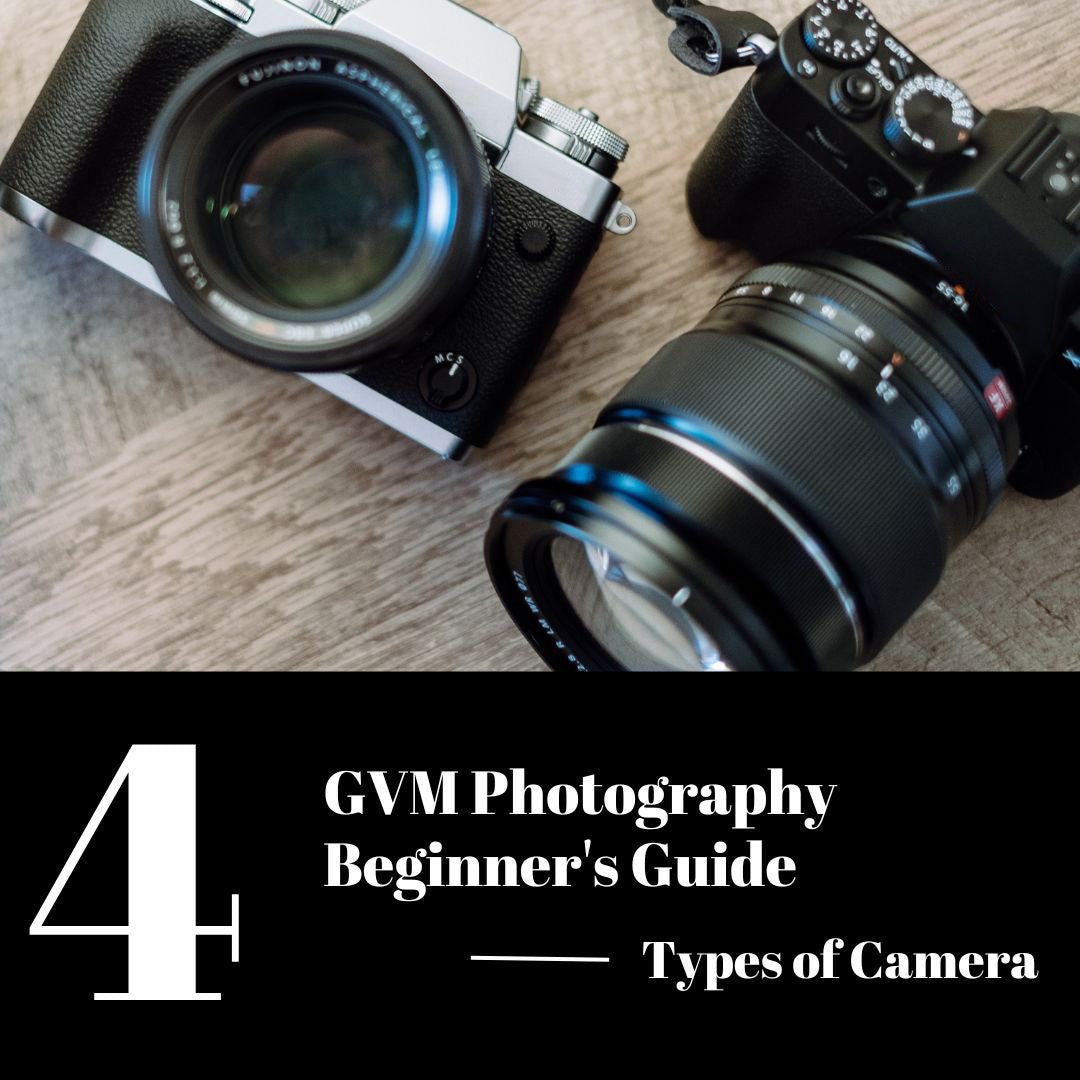Choosing the right camera is the first step in starting your photography journey. With so many options available, it can feel overwhelming. In this guide, we’ll break down the most common types of cameras, their features, and who they’re best suited for, making it easier for you to find the perfect fit.
1.DSLR Cameras (Digital Single-Lens Reflex)
Overview:DSLRs are one of the most popular camera types among photography enthusiasts and professionals. They use a mirror mechanism to reflect light from the lens into an optical viewfinder.

Features:
Interchangeable Lenses: Wide range of lens options for different photography styles.
Manual Controls: Full control over settings like aperture, shutter speed, and ISO.
High Image Quality: Large sensors produce sharp and detailed images.
Durable Build: Often weather-sealed and built to last.
Pros:Versatile for various types of photography.
Long battery life compared to other camera types.
Optical viewfinder offers a real-time view.
Cons:Bulkier and heavier than other camera options.
Learning curve for beginners.
Best For:Enthusiasts and professionals who value control and versatility.

2.Mirrorless Cameras
Overview:Mirrorless cameras are compact and lightweight, as they lack the mirror mechanism found in DSLRs. Instead, they use an electronic viewfinder or LCD screen.


Features:
Interchangeable Lenses: Like DSLRs, they offer lens flexibility.
Compact Design: Smaller and lighter, ideal for travel.
Advanced Autofocus: Fast and accurate focus, especially in newer models.
Electronic Viewfinder (EVF): Displays a preview of how the final image will look.
Pros:Lightweight and portable.
Quieter operation (no mirror slap sound).
Excellent for video recording.
Cons:Shorter battery life due to electronic components.
Can be pricier than entry-level DSLRs.
Best For:Beginners and professionals seeking portability without compromising quality.


3.Compact Cameras
Overview:Compact cameras are small, simple, and easy to use, making them perfect for casual photography.

Features:
Fixed Lenses: Non-interchangeable lenses with a range of zoom capabilities.
Automatic Modes: Intuitive settings for effortless shooting.
Portability: Fits easily into a pocket or small bag.
Pros:Extremely lightweight and portable.
Affordable for budget-conscious users.
Great for quick and casual shots.
Cons:Limited manual controls.
Smaller sensors lead to lower image quality compared to DSLRs and mirrorless cameras.
Best For:Casual photographers and travelers who prioritize convenience.

4.Bridge Cameras
Bridge cameras are a middle ground between compact cameras and DSLRs. They offer more features and controls but still have a fixed lens.

Features:
Long Zoom Ranges: Ideal for wildlife and sports photography.
Manual Controls: Some degree of customization.
Ergonomic Design: Larger body with a DSLR-like feel.
Pros:All-in-one solution for various types of photography.
No need to carry extra lenses.
Affordable compared to DSLRs.
Cons:Fixed lens limits flexibility.
Larger and heavier than compact cameras.
Best For:Enthusiasts seeking a versatile, affordable option.

5.Action Cameras
Overview:Designed for adventure and sports, action cameras are compact and rugged, often featuring waterproof and shockproof capabilities.

Features:
Wide-Angle Lenses: Captures more of the scene.
Durable Build: Designed to withstand tough conditions.
Video-Focused: Excellent for recording high-resolution videos.
Pros:Ultra-portable and durable.
Easy to mount on helmets, bikes, or drones.
Great for video and time-lapse photography.
Cons:Limited still photography capabilities.
Small sensors affect image quality in low light.
Best For:Adventure seekers and vloggers.

6.Smartphone Cameras
Overview:With advancements in technology, smartphone cameras have become incredibly powerful and are a favorite for everyday photography.

Features:
Convenience: Always with you.
AI Features: Automatic scene detection and enhancements.
Multiple Lenses: Wide, telephoto, and macro lenses in premium models.
Pros:User-friendly and intuitive.
Excellent for social media sharing.
Constantly improving with software updates.
Cons:Limited manual controls.
Smaller sensors compared to dedicated cameras.
Best For:
Everyday use and social media content creators.

Each type of camera offers unique benefits and drawbacks, so the best choice depends on your specific needs and goals. Whether you’re a casual photographer, an aspiring professional, or an adventure enthusiast, there’s a camera out there that’s perfect for you. Take your time to explore your options, and most importantly, enjoy the journey of capturing life’s moments!


0 comments